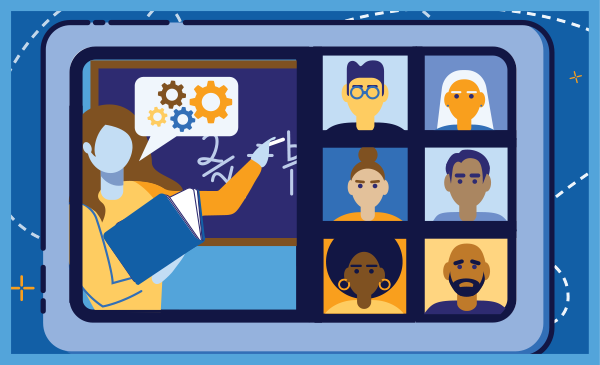Syllabus
overview
There is no one-size-fits-all approach to designing a syllabus. The structure of a course syllabus will differ depending on instructor, course topic, method of instruction, departmental policies and practices, and institutional guidelines. However, there are ways to structure a syllabus that are more effective than others. In this syllabus toolkit we provide syllabus templates and additional resources to help you create an inclusive and welcoming syllabus.
Purpose of the Syllabus
Left
A syllabus serves many purposes and is more than a simple contract or informational document for your students. Your syllabus should:
- Welcome students to your course
- Provide essential information (such as the learning objectives, required prerequisites, required course materials, and relevant course/departmental/college policies) to help students self-assess their readiness for the course and decide if the course is a good fit for their educational goals
- Outline the students’ responsibilities for successful coursework and describe the methods of assessment, which are the strategies by which student progress towards proficiency with the learning objectives will be evaluated and how/when the information will be provided to students
Right
- Serve as a resource for students throughout the course to keep track of due dates, assignments, expectations, and available resources outside the classroom to support their well-being and academic success
- Set the broader context for learning while helping your colleagues understand how your course aligns with the curriculum for impacted majors; for example, this information might be used for departmental curriculum mapping and accreditation purposes
Templates
The following are UIC-specific syllabus templates that you can use as a starting point as you create a syllabus for a course you are teaching. They are organized into sections you might consider including in your syllabus. Attention was paid to suggesting language for each section that conveys a welcoming tone and helps to create an ethos of inclusion, academic integrity, and community in your class. Please select the syllabus template below based on the modality of the course you are teaching (on campus or hybrid, synchronous online, or asynchronous online).
toolkits
About the Syllabus Toolkit
Research Supporting Inclusive Syllabus Design
Does Syllabus Tone Matter?
A research article by Gurung and Galardi (2021) examined factors affecting student help-seeking behaviors in the classroom. Findings show that both the tone of the syllabus (warm tone) and the presence of statements normalizing help-seeking behavior (mental health statements) can reduce stigma and positively influence students’ intentions to ask instructors for help with wellness and academic success.
Concerned about Syllabus Length?
A research study by Harrington and Gabert-Quillen (2015) examined student perceptions of syllabus length. The findings might surprise you! Students actually preferred a longer syllabus (9- to 15-pages in length) with all the assignment and policy details included.
These findings are consistent with the exemplar syllabi examples published on the Society for the Teaching of Psychology Project Syllabus website. This professional resource suggests that instructors “err on the side of inclusion rather than exclusion” when it comes to syllabus design.
Syllabus as “Contract”?
Ludy and colleagues (2016) compared students’ impressions of a text-rich, contractual syllabus to a graphic-rich, engaging syllabus and found that while both were perceived positively, the more engaging syllabus was considered more appealing and comprehensive by students. Students also reported that the more engaging syllabus motivated more interest in the class and the instructor. Notably, increased student interest is a predictor of improved academic achievement (Schiefele, Knapp, & Winteler 1992), suggesting design of a more engaging syllabus may be an effective strategy by which instructors could foster student success!
XX
column 1
The Center for the Advancement of Teaching Excellence (CATE) partnered with the Office of the Vice Provost for Undergraduate Affairs and Academic Programs (VPUAAP) in an exciting opportunity supported by APLU called the Student Experience Project (SEP). The SEP is a collaborative of university leaders, faculty, researchers, and national education and improvement organizations committed to innovative, evidence-based practices that increase degree attainment by transforming the college student experience and creating equitable learning environments.
In spring 2021 and fall 2022, nine UIC faculty members participated in the SEP’s First Day Project, an effort focused on improving the messages that students receive through syllabi and the first day of class that support social belonging, growth mindset, and an equitable learning experience. As a participant in the First Day Project, UIC worked with other institutions of higher education as part of the Peer Learning Network. This collaborative project resulted in the creation of a suite of free online resources, called the First Day Toolkit, which helps instructors in revising their syllabi and other messaging planned for the first day of class.
column 2
CATE has integrated the recommendations of the First Day Project into the Syllabus Templates and, at the beginning of each semester, also offers workshops on Creating an Inclusive Syllabus as part of our Teaching Tidbits Workshops.


